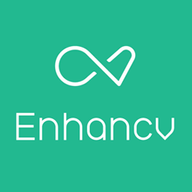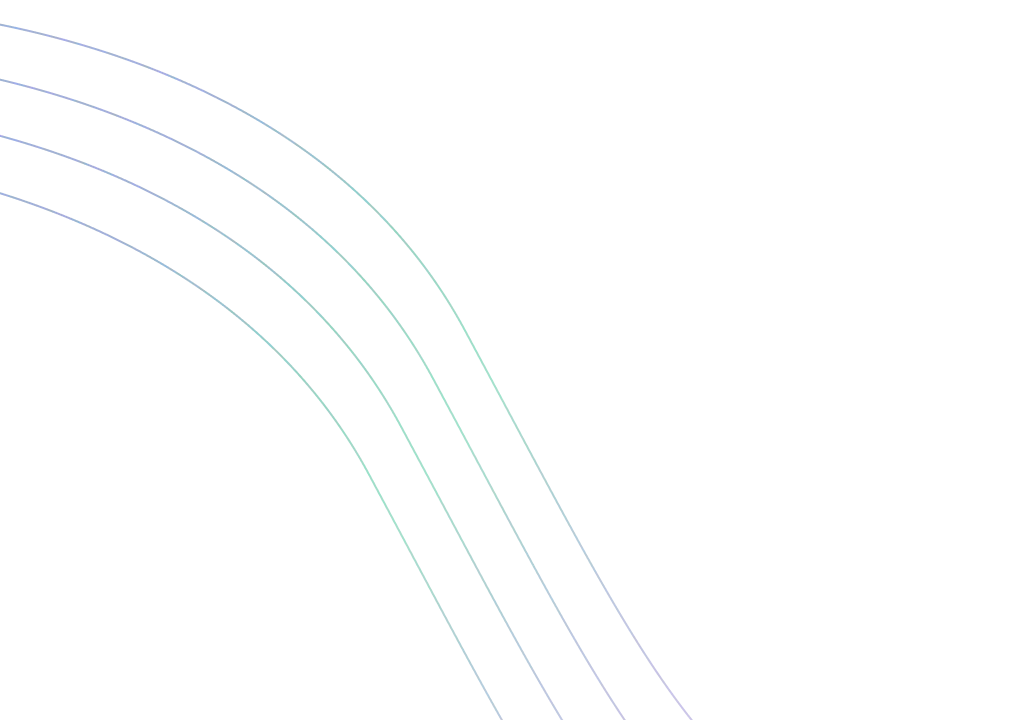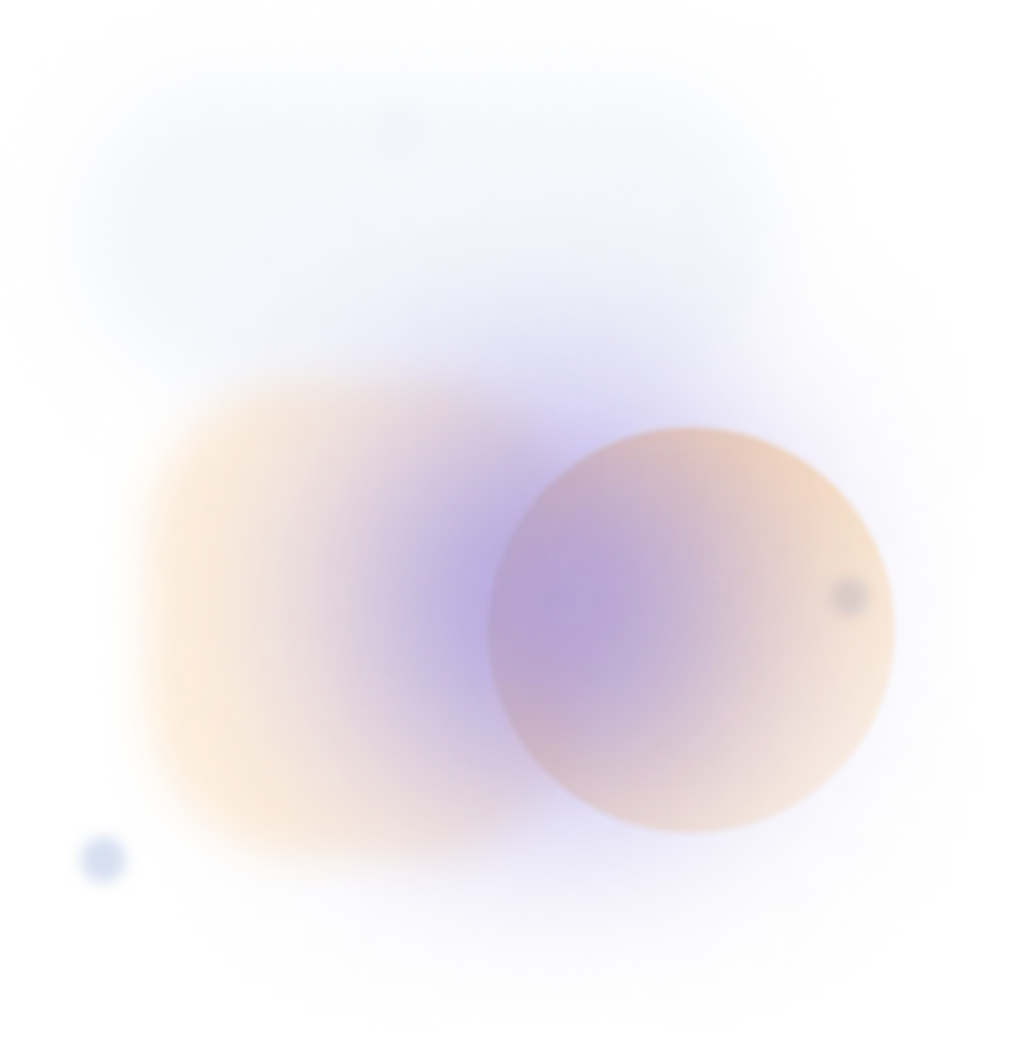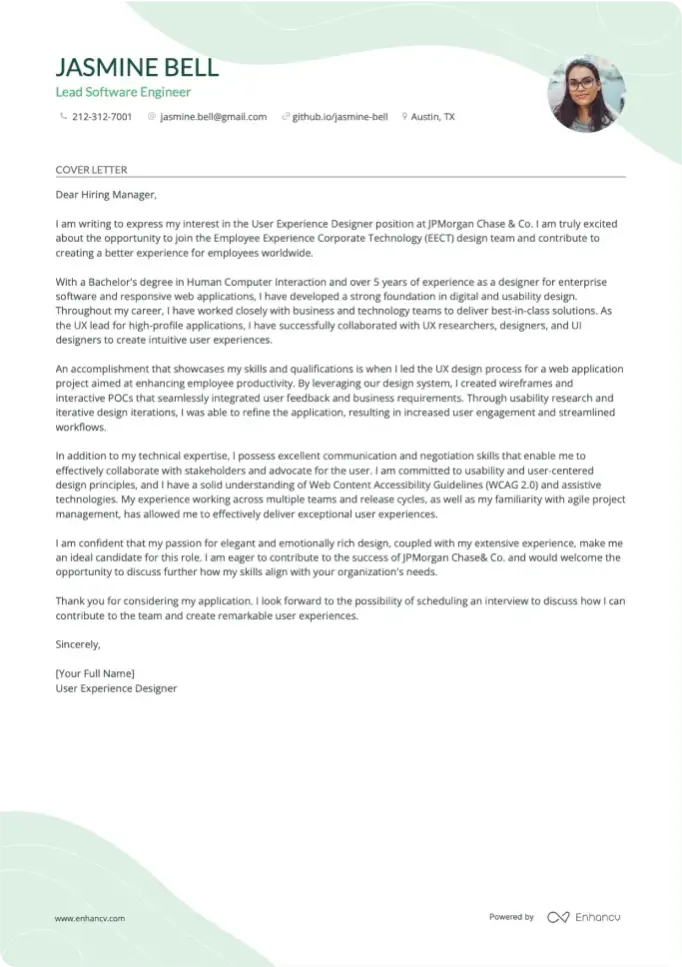Crafting an art director cover letter can be daunting, especially when you're deep in the job search and realize it's more than just an extra document—it's your chance to shine. While your resume lists your experiences, your cover letter should weave a compelling narrative around your proudest professional moment, avoiding cliches and maintaining formality. Remember, brevity is key; keep it to one page that packs a punch and leaves a lasting impression.
- Introduce your profile to catch recruiters' attention;
- Use professional templates and examples to make sure your art director cover letter follows the best industry standards;
- Settle on your most story-worthy achievement to shine a light on what makes your application unique;
- Write a art director cover letter, even when you lack professional experience.
Ready to start with the basics: upload your resume to Enhancv's AI, below, to see the art director cover letter it would write for you.
If the art director isn't exactly the one you're looking for we have a plethora of cover letter examples for jobs like this one:
- Art Director resume guide and example
- Packaging Designer cover letter example
- Narrative Designer cover letter example
- Senior Graphic Designer cover letter example
- Lighting Designer cover letter example
- Concept Art cover letter example
- Print Designer cover letter example
- Electrical Designer cover letter example
- Interactive Designer cover letter example
- Motion Graphics cover letter example
- Plumbing Designer cover letter example
Drop your resume here or choose a file.
PDF & DOCX only. Max 2MB file size.
Art director cover letter example
Hazel Clark
Jacksonville, Florida
+1-(234)-555-1234
help@enhancv.com
- Quantifiable achievements: The cover letter emphasizes specific accomplishments, like increasing consumer engagement by 25% and boosting online interactions by 40%, which effectively demonstrates the candidate's capability to generate tangible results.
- Relevant experience: By mentioning the leadership of a multifaceted campaign at a previous company, the candidate showcases direct experience that is applicable to the prospective role of Art Director.
- Alignment with company goals: The candidate communicates a desire to tackle similar challenges at the new company, suggesting a keen understanding of and alignment with the prospective employer’s strategic direction and branding narratives.
- Offer to engage further: The cover letter invites the hiring manager to a discussion, a proactive approach that indicates readiness to explore how the candidate’s skills and experiences align with the team's needs and opens the door for further conversation.
The format of your art director cover letter: structure, fonts, margins, and more
Your art director cover letter should include a header (with your name, position, and date); a greeting and introductory paragraph; a body and closing paragraphs; and an optional signature.
Remember that you're writing your art director cover letter for recruiters - as the Applicant Tracker System won't scan this content.
Here are a few more tips and tricks to keep in mind when formatting your art director cover letter:
- Use the same font in your art director cover letter and resume. We recommend modern fonts, e.g. Lato and Rubik, to help you stand out, instead of the stereotypical Arial and Times New Roman.
- Each paragraph should have single spacing, which is already set up for you in our cover letter templates.
- Our cover letter builder follows industry standards for your art director cover letter formatting - with a one-inch margin, surrounding your content.
- Always export your art director cover letter in PDF to ensure the image or text quality stays the same and your writing isn't moved about.
Too busy to write your cover letter? Let our free cover letter generator handle it in just a few clicks.
The top sections on a art director cover letter
- Header: This section includes your contact information and the date, ensuring the recruiter knows who you are and how to contact you, as well as presenting a professional format.
- Greeting: A well-targeted greeting shows you've done your homework and are reaching out to a specific individual, which is imperative to make a personal connection in creative industries.
- Introduction: The introduction must grab the recruiter’s attention and quickly establish your experience as an art director, hinting at your ability to lead creative projects and teams.
- Body: Highlight specific accomplishments and projects that demonstrate your skill set and leadership qualities in directing art and design work, substantiating your suitability for the position.
- Closing: A strong closing section should reiterate your enthusiasm for the role, suggest an eagerness for a personal interview, and contain a call to action, reflecting the proactive nature expected of an art director.
Key qualities recruiters search for in a candidate’s cover letter
- Strong portfolio showcasing a breadth of visual design work: Recruiters want tangible proof of a candidate's aesthetic sensibility, innovation, and ability to execute high-quality design projects.
- Leadership experience in directing creative teams: Recruiters prioritize candidates who have demonstrated the ability to guide, inspire, and manage designers, illustrators, and other creatives to achieve a shared vision.
- Experience with cross-disciplinary collaboration: Art Directors often need to work closely with copywriters, marketers, and other departments; hence, a track record of successful collaboration is essential.
- Proficiency in design software and technology: Being up to date with the latest design tools and technology is critical for creating compelling and current visual content.
- Excellent communication and presentation skills: Art Directors must clearly articulate their vision to both their creative team and non-creative stakeholders, making these skills crucial for the role.
- Proven ability to conceptualize and execute campaigns: Recruiters look for candidates who have successfully developed and overseen the implementation of creative strategies that meet branding, marketing, and advertising objectives.
How to address hiring managers in your art director cover letter greeting
Goodbye, "Dear Sir/Madam" or "To whom it may concern!"
The salutation of your art director cover letter is how you kick off your professional communication with the hiring managers.
And you want it to start off a bit more personalized and tailored, to catch the recruiters' attention.
Take the time to find out who's recruiting for the role (via LinkedIn or the company page).
If you have previously chatted or emailed the hiring managers, address them on a first or last name basis.
The alternative is a "Dear HR team" or "Dear Hiring Manger", but remember that a "Dear Ms. Simmons" or "Dear Simon," could get you farther ahead than an impersonal greeting.
List of salutations you can use
- Dear Hiring Manager,
- Dear [Company Name] Team,
- Dear [Name of the Department] Department,
- Dear Mr./Ms. [Last Name],
- Dear [First Name] [Last Name],
- Dear Search Committee,
What to include in those first two sentences, or your art director cover letter introduction
Have you ever wondered what the best way is to present your profile in the art director cover letter introduction?
There's no right or wrong answer if you're being concise and authentic to yourself.
Some professionals start their art director cover letter by:
- congratulating the company - focusing on something impressive, whether that's an award, an industry-leading project, or a key event;
- aligning their passion for the field or industry with the job - if you're enthusiastic about what you do, you'd thus grow your skill set and value as a professional.
Choosing your best achievement for the middle or body of your art director cover letter
Now that you have the recruiters' attention, it's time to write the chunkiest bit of your art director cover letter.
The body consists of three to six paragraphs that focus on one of your achievements.
Use your past success to tell a story of how you obtained your most job-crucial skills and know-how (make sure to back these up with tangible metrics).
Another excellent idea for your art director cover letter's middle paragraphs is to shine a light on your unique professional value.
Write consistently and make sure to present information that is relevant to the role.
Two ideas on how to end the final paragraph of your art director cover letter
Closing your art director cover letter, you want to leave a memorable impression on recruiters, that you're a responsible professional.
End your cover letter with how you envision your growth, as part of the company. Make realistic promises on what you plan to achieve, potentially, in the next six months to a year.
Before your signature, you could also signal hiring managers that you're available for the next steps. Or, a follow-up call, during which you could further clarify your experience or professional value.
Is it beneficial to mention that you have no experience in your art director cover letter?
Lacking professional experience isn't the end of the world for your art director cover letter.
Just be honest that you may not have had roles in the industry, but bring about so much more.
Like, your transferable skills, attained thanks to your whole work and life experience (e.g. the skills your summer spent working abroad taught you).
Or, focus on what makes you, you, and that one past success that can help you stand out and impress recruiters (think of awards you've attained and how they've helped you become a better professional).
Alternatively, write about your passion and drive to land the job and the unique skill set you would bring to enhance the workplace culture.
Key takeaways
Winning recruiters over shouldn't be difficult if you use your art director cover letter to tell a story that:
- Is personalized by greeting your readers and focusing on key job skills greets;
- Isn't spread all over the place, but instead focuses on one key achievement and selling your value as a professional;
- Introduces your enthusiasm for the role, passion for the job, or creativity in communication;
- Is also visually appealing - meeting the best HR practices;
- Ends with a nod to the future and how you envision your growth, as part of the company.

